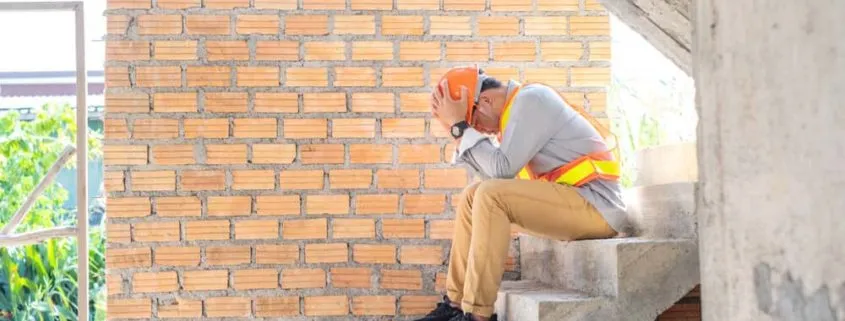
Table of Contents
House construction mistakes: Yvhomes provides the best solution
House Construction is one of the most significant investments in a person’s life. However, even house construction mistakes can lead to costly repairs, safety hazards, and long-term structural issues. Proper planning, quality materials, and adherence to building codes are essential for a successful project.
What is the biggest mistake in house construction in Bangalore?
One of the most significant mistakes is poor planning and site preparation, as it impacts the entire project’s structural integrity and longevity. In this guide, we highlight 10 common house construction mistakes and provide expert solutions to help you avoid them.
1. Poor Planning and House Design
The Mistake:
- Inadequate space planning leads to inefficient layouts
- Overlooking future expansion needs
- Ignoring natural light, ventilation, and accessibility
How to Avoid:
- Hire experienced architects and engineers
- Utilize 3D modeling and architectural software for accurate designs
- Conduct a thorough site analysis before finalizing the blueprint
2. Inadequate Site Preparation
- The Mistake:
- Skipping soil testing and site assessment
- Neglecting ground leveling and compaction
- Overlooking drainage and water flow issues
How to Avoid:
- Conduct professional soil tests to determine load-bearing capacity
- Implement proper site grading and drainage planning
- Clear debris and vegetation before starting home construction
3. Choosing Low-Quality Materials
The Mistake:
- Cutting costs by using substandard materials
- Failing to verify supplier credibility
- Selecting materials incompatible with the environment
How to Avoid:
- Invest in durable, high-quality house construction materials
- Partner with reputable suppliers and manufacturers
- Choose materials suitable for local climate conditions
4. Poor Foundation Construction
The Mistake:
- Using the wrong foundation type or insufficient depth
- Improper concrete mixing and curing techniques
- Ignoring reinforcement requirements
How to Avoid:
- Follow recommendations from structural engineers
- Use high-quality concrete and adhere to proper curing methods
- Reinforce foundations according to load requirements
5. Ignoring Structural Load Calculations
The Mistake:
- Underestimating load-bearing capacities
- Overloading walls, beams, and columns
- Failing to consider seismic or wind resistance
How to Avoid:
- Consult a certified structural engineer
- Utilize advanced load calculation tools and software
- Adhere to national building codes and safety regulations
6. Faulty Electrical and Plumbing Installations
The Mistake:
- Poor wiring leads to fire hazards
- Incorrect pipe fittings cause leaks
- Failing to future-proof electrical and plumbing systems
How to Avoid:
- Work with licensed electricians and plumbers
- Ensure all installations comply with local building codes
- Plan for future expansions and smart home integrations
7. Poor Roofing Installation
The Mistake:
- Incorrect slope or drainage, leading to water accumulation
- Using low-quality roofing materials
- Poor sealing and insulation causing leaks
How to Avoid:
- Install weather-resistant roofing materials
- Ensure proper slope and drainage system installation
- Use waterproof membranes and insulation
8. Inadequate Insulation and Ventilation
The Mistake:
- Insufficient thermal insulation increases energy costs
- Poor ventilation causes moisture buildup and mold growth
- Overlooking attic and crawl space ventilation
How to Avoid:
- Use high-quality insulation materials for walls, ceilings, and floors
- Ensure proper airflow in all spaces
- Follow energy efficiency guidelines and standards
9. Poor Workmanship and Lack of Skilled Labor
The Mistake:
- Hiring unqualified or inexperienced workers
- Lack of supervision leading to construction errors
- Poor finishing and detailing
How to Avoid:
- Hire skilled and certified contractors
- Conduct regular quality checks and site inspections
- Train workers on best construction practices
10. Lack of Compliance with Building Codes
The Mistake:
- Failing to obtain proper permits
- Ignoring zoning laws and safety regulations
- Cutting corners to save time or costs
How to Avoid:
- Consult local authorities and adhere to building codes
- Secure necessary permits before construction begins
- Schedule inspections at key construction phases
Frequently Asked Questions (FAQs)
How can I ensure my foundation is strong?
Follow engineer recommendations, use high-quality materials, and ensure proper curing and reinforcement techniques.
What are the most common electrical mistakes in a new build?
Using substandard wiring, overloading circuits, and failing to install proper grounding are common mistakes that can lead to electrical failures and hazards.
How do I choose the best materials for my project?
Select high-quality, durable materials from reputable suppliers and consider the local climate and environmental conditions.
What should I check before hiring a contractor?
Verify their experience, licenses, references, and past projects. Ensure they follow industry standards.
How can poor ventilation affect my home?
Poor ventilation can cause moisture buildup, mold growth, and increased energy costs due to inefficient airflow and temperature regulation.
What are the best ways to prevent water damage in a new house?
Ensure proper site grading, install high-quality roofing and drainage systems, and use waterproof sealing in critical areas.
How often should I inspect my house construction mistakes in site?
Regular inspections should be conducted at every major phase, from foundation work to final finishes, to ensure compliance with building codes.
What are the legal requirements for building a home?
Legal requirements vary by region but generally include zoning laws, building permits, environmental regulations, and safety inspections.
How do I avoid budget overruns during house construction?
Plan a realistic budget, track expenses regularly, work with experienced professionals, and include a contingency fund for unexpected costs.
Conclusion
Avoiding construction mistakes requires careful planning, quality materials, skilled labor, and adherence to regulations. By addressing common errors early and working with experienced professionals, you can ensure a successful, safe, and cost-effective building project. Prioritize quality workmanship and compliance to achieve long-term durability and structural integrity.

Dream home just
one form way
Schedule a call with one of our Consultants today





